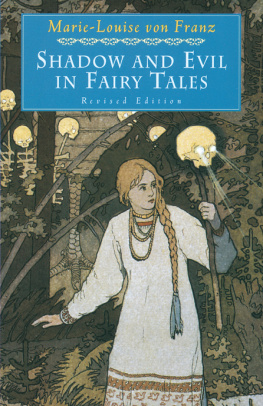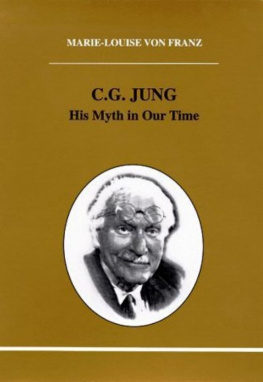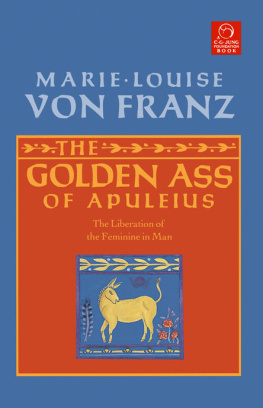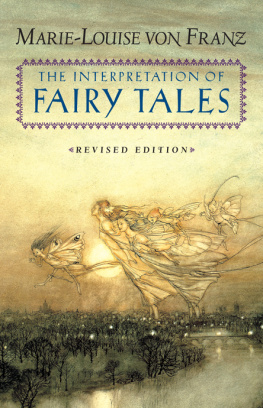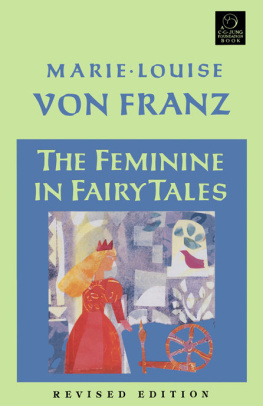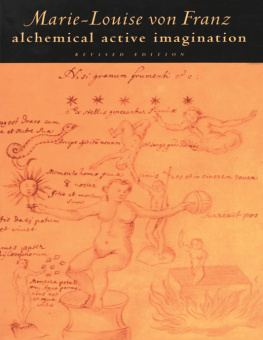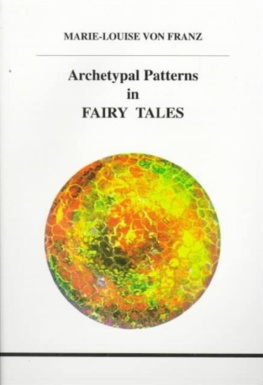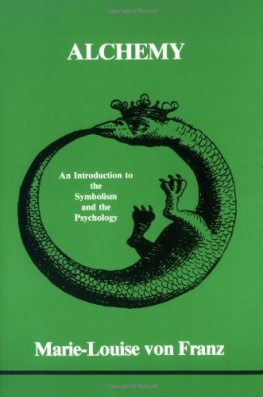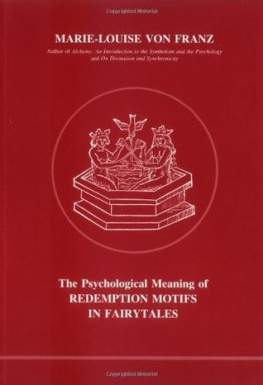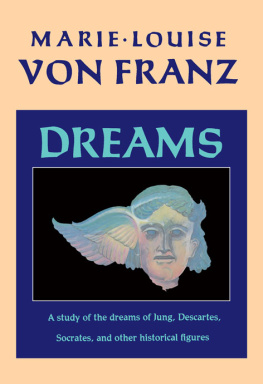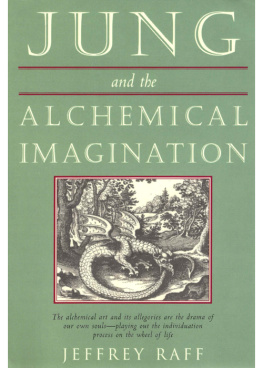
A C. G. JUNG FOUNDATION BOOK
The C. G. Jung Foundation for Analytical Psychology is dedicated to helping men and women to grow in conscious awareness of the psychological realities in themselves and society, nd healing and meaning in their lives and greater depth in their relationships, and to live in response to their discovered sense of purpose. It welcomes the public to attend its lectures, seminars, lms, symposia, and workshops and offers a wide selection of books for sale through its bookstore. The Foundation also publishes Quadrant, a semiannual journal, and books on Analytical Psychology and related subjects. For information about Foundation programs or membership, please write to the C. G. Jung Foundation, East th Street, New York, NY 10016 .
Marie-Louise von Franz

ALCHEMICAL
ACTIVE
IMAGINATION

REVISED EDITION

SHAMBHALA
Boulder
2017
Shambhala Publications, Inc.
4720 Walnut Street
Boulder, Colorado 80301
www.shambhala.com
1979, 1997 by Marie-Louise von Franz
Front cover art is from The Arts of the Alchemists by C. A. Burland. Although the publisher made every effort to secure permission to reprint this art, attempts to locate the copyright holderwere unsuccessful.
All rights reserved. No part of this book may be reproduced in any form or by any means, electronic or mechanical, including photocopying, recording, or by any information storage and retrieval system, without permission in writing fromthe publisher.
Library of Congress Cataloging-in-Publication Data
Franz, Marie-Louise von, 1915
Alchemical active imagination/by Marie-Louise von Franz.
Rev. ed.
p. cm.
eISBN 9780834840799
ISBN 978-0-87773-589-2 (pbk.)
1. Jungian psychology. 2. AlchemyPsychological aspects.
3. Dorn, Gerhard, 16th cent. I. Title.
BF175.F73 1997 97-29220
150.19 54dc21 CIP

THE TEXT OF THIS BOOK derives from the transcription by Miss Una Thomas of a series of lectures given by Dr. Marie-Louise von Franz at the C. G. Jung Institute, JanuaryFebruary 1969 in Zurich. We are grateful to Ms. Thomas for her faithful preparation of the original version.
I want to thank Dr. Barbara Davies for translating the additions of Ms. Francine Perrot in the French edition. My greatest thanks to Dr. Vivienne Mackrell for editing the text with me and her genial support of this effort. I want to thank Kendra Crossen for her patience.

Extraverted and Introverted Traditions
BEFORE I GO INTO THE INTERPRETATION of a specic text I want to give you a short history of alchemy as viewed from the psychological standpoint. The birth of Western alchemy took place about the time of the birth of Christ. There were beginnings in the rst century before Christ, but these are difcult to trace. Thus one could say that alchemy began in the rst century, with a ourishing period in Greece and the Roman Empire in the second and third centuries, followed by a gradual decline there up to the tenth century. During this last period the main Greek texts were transported and translated into Arabic, and in the seventh and eighth centuries there was another ourishing period in Arabic countries, after which alchemy evolved along with the history of chemistry, following the same course as all physics and mathematics. In about the ninth century A.D. it returned to Christian civilization via the Arabs and the Jews in Spain and Sicily, and from there invaded the Western countries and united with scholastic philosophy, and so developed further. Early chemistry is simply the history of one branch of the natural sciences in general.
Western alchemy, in the narrower sense of the word, had two parents: Greek rational philosophy or, you could say, a nature philosophy (I refer mainly to the pre-Socratic Greek philosophers such as Empedocles and Thales of Milet, and to Heraclitus) on the one hand, and Egyptian technology combined with Mesopotamian astrology on the other. The Greek philosopherswho introduced rational thought into their concept regarding the problems of nature, of matter, space, and timemade very few or no experiments. Their theories are bolstered by certain observations, but it never occurred to them actually to experiment. By contrast, in Egypt there was a highly developed chemical-magical technique, but in general the Egyptians gave it no thought, either philosophical or theoretical. This technique was simply the handing down by certain priestly orders of practical recipes together with magic religious representations but without theoretical reection. When the two trends of Greek and Egyptian civilization came together, they united in a very fruitful marriage, of which alchemy was their child. You know that from Greek philosophy all the basic concepts still valid in modern physics were created: the concepts of matter and space, the problem of time, if you think of Zeno; the concept of energy, that would be Heraclitus; the concept of the particle, created by Leukippos and Democritus; the concept of afnity of the elements, the idea of the four elements, which prevailed till right up to the sixteenth and seventeenth centuries in Western civilizationall these concepts were created by the different pre-Socratic Greek philosophers.
In Greece it was a switch from a religious-mythological outlook on the existence of the world to, for the rst time, a philosophical one, in the sense that the basic concepts were philosophical but still lled with mythological mana, so to speak, and very much associated with what we now would call psychological projections. One of the ideas, namely that the basic elements of the universe are mathematical forms, was created through the Pythagoreans and carried on in a slightly varied form by Plato, and is now again of importance in Heisenbergs theory and in quantum physics. Thus there is a strong line going through Greek philosophy into modern science, even though it never occurred to the Greeks to make practical tests.
In Egypt, chemical techniques had been highly developed, butand this is very relevantthey were used mostly in a specic realm of Egyptian religious life connected with life after death. To give one example: the Egyptians lived in miserable little clay huts, which naturally have all disappeared. Not one private Egyptian house remains, only the great buildings, the pyramids, temples, and tombs. When Jung one day remarked to a sheikh that it was striking that the Egyptians had no good houses during their lifetime but gave all their energy to building their tombs, the Arab smiled and replied, Well, why should you be troubled about building a house for the seventy years of your life here? Its more important to build a house for your life in eternity! For him, it was still quite the natural thing to do. An enormous percentage of an Egyptians energy was directed to life after death, and his main concern was that the right kinds of rituals be performed so that eternal life after death would be assured in the right way. Egyptian civilization is typically African, not Mediterranean. They believed that through the preservation of the body, of the corpse, the immortality of the soul could be assured in a technical, magical way and that immortality was achieved by transforming the body of the dead person into the cosmic Godhead. On the one side, the Egyptians had a pantheon of many gods, but on the other hand, they believed that there was one cosmic Godhead which was sometimes identied with Atum, or with Nun, or with the god Re in particular form, or in the cosmic Osiris, sometimes also called the Ba-soul of the universe. There are different names according to the different provinces in Egypt, but the basic idea is that over all the many gods of the Egyptian pantheon there rules a kind of cosmic spirit, a god that is an all-pervading spirit of the universe who rules all other gods and can absorb them. The dead person was slowly transformed into that god. He took part in a great mythological process that was, so to speak, a mirror of the whole cosmic situation in which the Egyptian felt himself to live.
Next page

